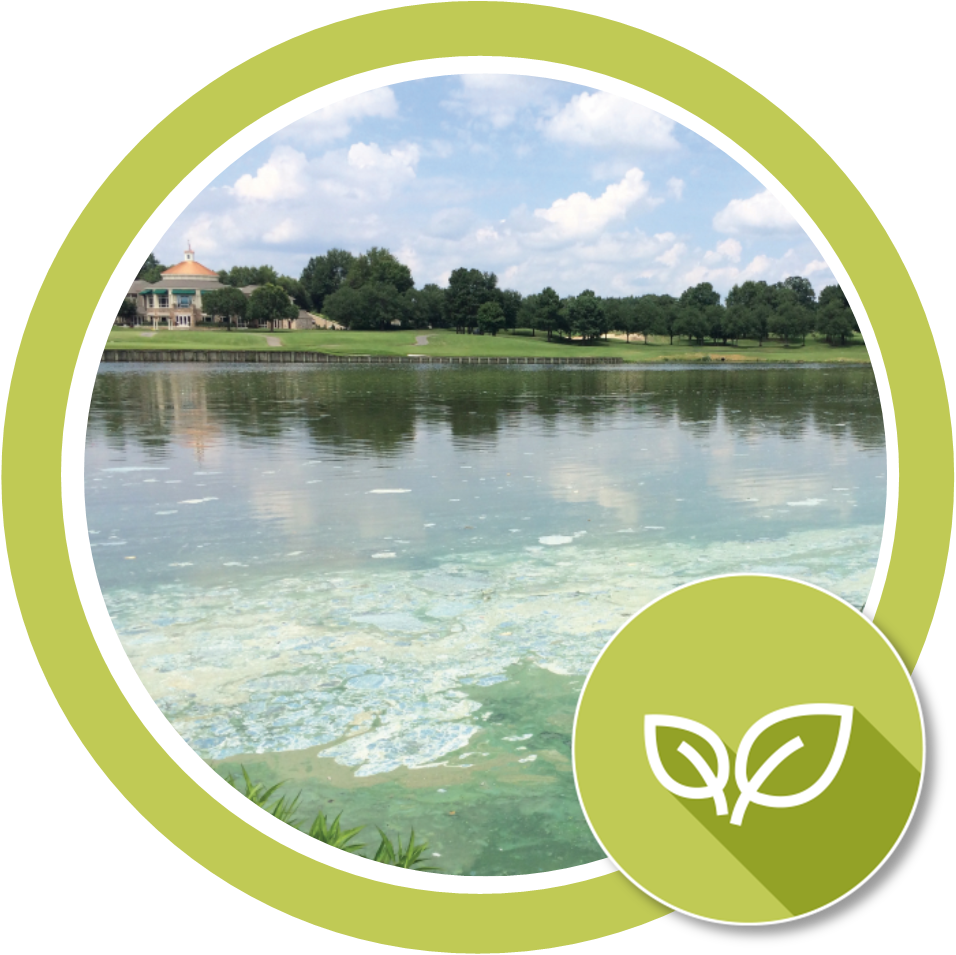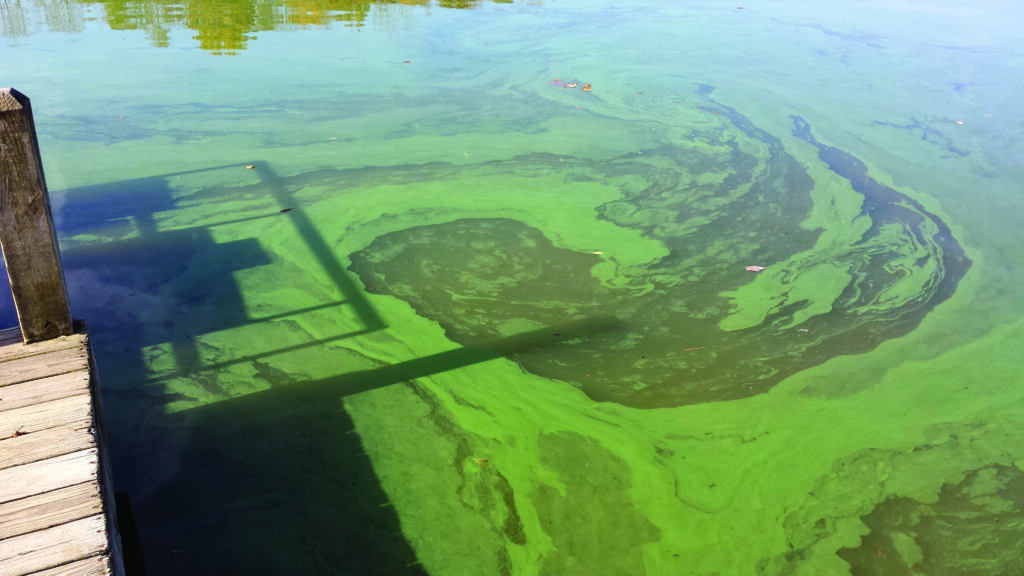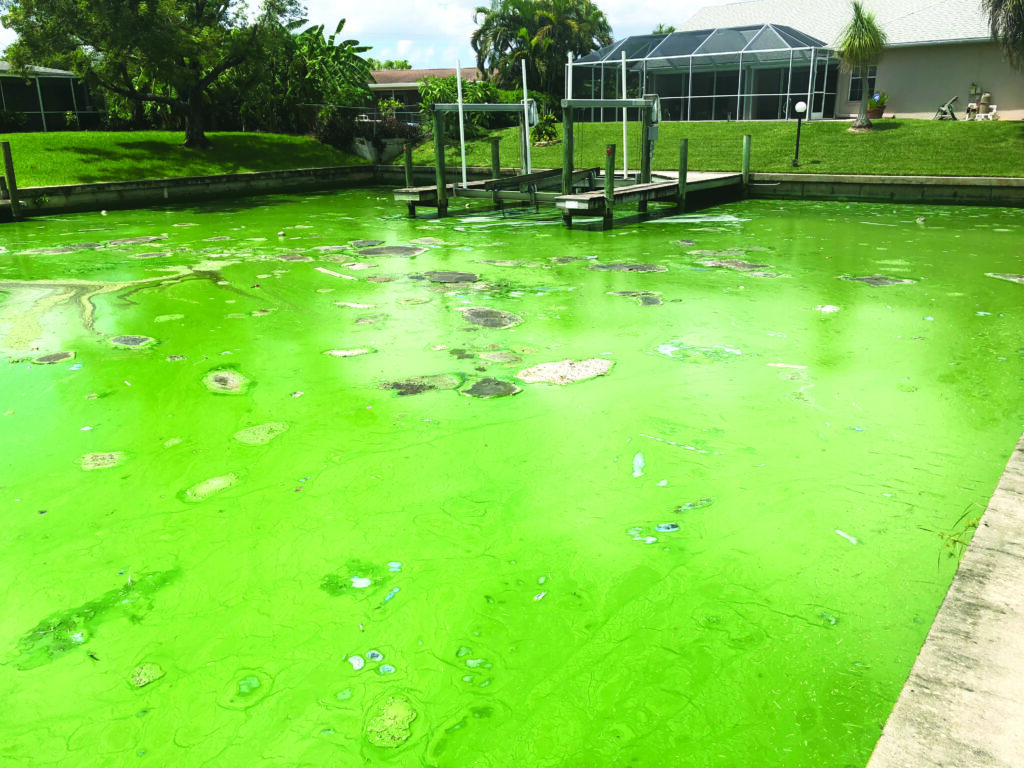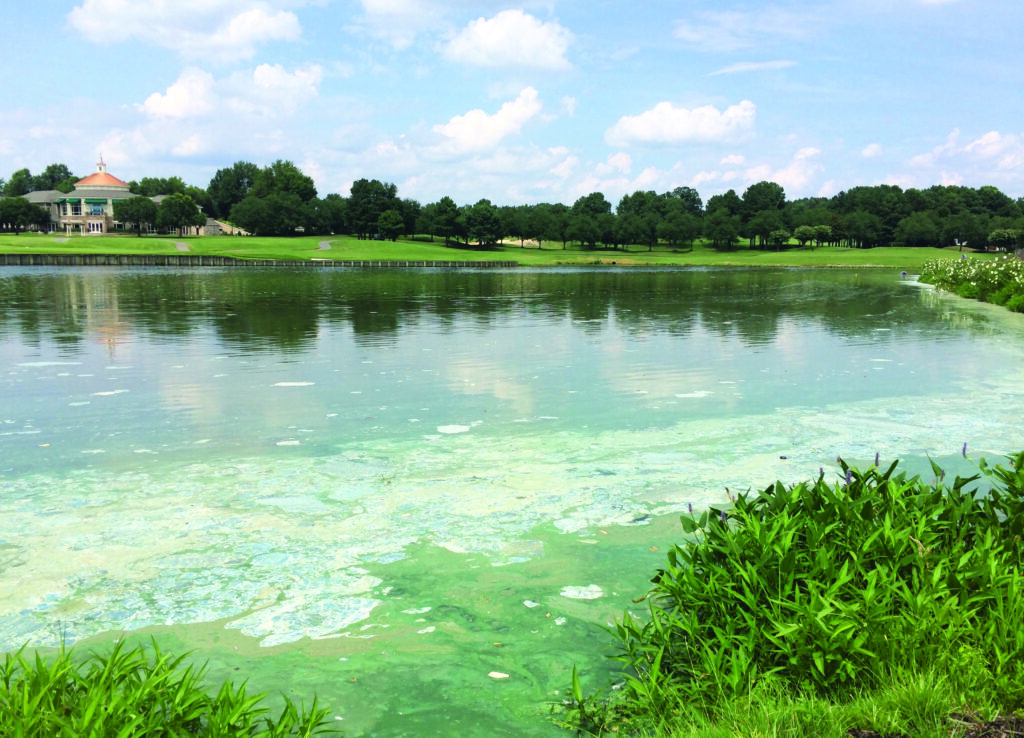
Most community waterbodies are man-made to prevent flooding and capture pollutants by collecting and filtering stormwater runoff. They can also offer aesthetic allure and recreational advantages, which may contribute to increased property values and community desirability. Despite these benefits, they can present substantial risks if not properly managed. Eroded shorelines may collapse, posing dangers to residents and landscapers. Nuisance weeds contribute to physical hazards in the water, while muck and debris can obstruct stormwater equipment, elevating the risk of flooding and damage to community infrastructure. However, one of the most significant threats often goes overlooked – algae.
Algae found in freshwater generally fall into two categories: filamentous algae form dense, slimy patches; planktonic algae have a dye-like appearance. Some species of planktonic algae, like cyanobacteria, can form harmful algal blooms (HABs).
What Are HABS?
Also referred to as blue-green algae, cyanobacteria are capable of producing toxins that can be harmful (and in some cases deadly) to fish, birds, livestock, and other mammals. Sadly, reports come out each year of dogs dying after exposure to cyanotoxins through swimming in or ingesting contaminated water. Toxins can also become airborne, exposing both humans and animals to contaminated air droplets. This airborne exposure can lead to irritation of the eyes, nose, throat, and lungs.

While there is currently no evidence indicating HABs are life-threatening to humans, their harmful effects cannot be understated. Exposure to cyanotoxins may result in a range of adverse effects, including vomiting, headaches, stomach aches, diarrhea, muscle weakness, dizziness, slurred speech, and liver damage. According to the Centers for Disease Control (CDC) and Prevention, there may be a link between prolonged toxin exposure and the development of neurological diseases, such as Alzheimer’s, Parkinson’s, and Amyotrophic Lateral Sclerosis (ALS).
The CDC reports that there is no specific diagnostic test, antidote, or treatment for cyanotoxin exposure, beyond management of the symptoms.
How Do HABs Develop?
Like any form of algae, HABs typically develop in waterbodies that contain elevated nutrient levels. The combination of abundant sunlight and high temperatures facilitates photosynthesis, making mid to late summer the prime time for HAB occurrences. Cyanobacteria consume substantial amounts of dissolved oxygen (DO). In the event of a large bloom, rapid depletion of DO exacerbates the stress on fish and other aquatic organisms.
Evidence suggests that HABs are occurring more frequently. In recent time, there has been a notable upward trend in average summer temperatures, especially in Northern states. Runoff from roadways, urban developments and agricultural land, lawn fertilizers, sewage, and other pollutants introduces abnormally elevated levels of nutrients into our waterbodies, amplifying the conditions that fuel HABs.

How Can HABs Be Identified?
Cyanobacteria blooms often appear as blue, blue-green, or “pea soup” green scum that resembles oil or spilled paint on the water’s surface. In some cases, they can also appear red, brown, white, or gold. They may accumulate in specific areas of a waterbody due to wind or water currents, and multiple toxic blooms may occur simultaneously. Likewise, smaller or shallower ponds have the potential to form concentrated toxic zones.
A cyanobacteria bloom and the presence of toxins must be confirmed through professional water quality testing. Not all cyanobacteria blooms release toxins, but recognizing the signs is pivotal to protecting residents, employees, pets, and wildlife from potential harm.
How Are HABs Managed?
If urgent management is necessary, professionals may apply an EPA-registered algaecide in an attempt to rapidly eliminate the bloom. However, toxins can be released during die-off. Even when cyanobacteria are no longer visible, there is no reliable way to remove toxins from the water. Managing HABs when toxins are present is challenging and may not always yield the ideal results. The most responsible way to keep humans and animals safe from cyanotoxins is through prevention.
An ongoing lake management program equips community leaders with proactive solutions to keep a close eye on the environmental conditions and detect imbalances that signal a bloom may be imminent. Water quality testing, nutrient management, fountains and aeration, and shoreline vegetation maintenance are central to a proactive water quality management program. And if serious water quality or shoreline issues do arise, aquatic experts can implement more impactful solutions like shoreline restoration and depth restoration to help improve water health and community safety.
Homeowners and staff also play an important role in preventing water quality imbalances. Remind residents to properly dispose of pet waste and trash. Ask landscapers to bag grass clippings and lawn debris, and limit the use of fertilizers. These small efforts can prevent excess nutrients and bacteria from entering nearby waterbodies.

While pond aesthetics are important, the well-being of residents should always take precedence. Property managers hold the keys to both. Through proactive strategies, collaboration with experts, and a steadfast commitment to ecological balance, stakeholders can work together to cultivate clean, beautiful waterbodies that enhance quality of life and elevate the desirability of their communities for years to come.
ABOUT THE AUTHOR
Everyone wants a beautiful lake but it’s not always easy, which is why SOLitude Lake Management uses science-backed solutions to take care of algae, weeds, and other lake issues so you can avoid the frustrations and enjoy clean water. SOLitude’s team of aquatic scientists specialize in providing customized lake, stormwater pond, wetland and fisheries management programs. Services include water quality testing and restoration, algae and aquatic weed control, installation and maintenance of fountains and aeration systems, shoreline erosion control, muck and sediment removal and invasive species management. Contact SOLitude at 855-534-3545 or visit solitudelakemanagement.com.

















